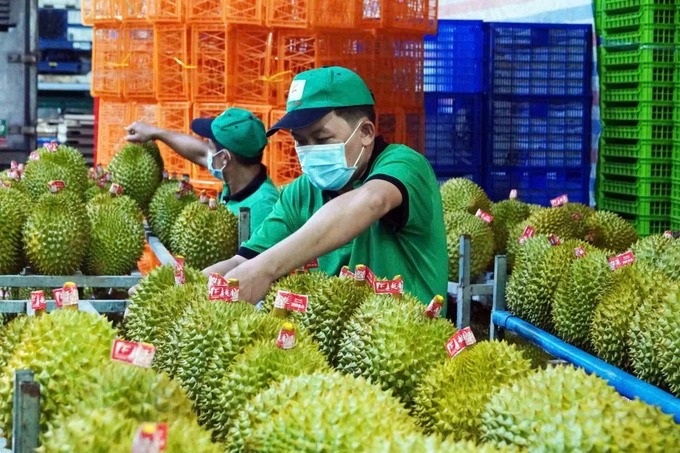
Vietnamese durian exports have faced mounting obstacles due to stricter Chinese inspections.
According to the General Department of Customs, in the first four months of 2025, Vietnam exported USD 777 million worth of fruits and vegetables to China, down 33 percent compared to the same period last year. Exports to other major markets such as South Korea and Thailand also declined by 5 percent and 3 percent, respectively.
“The fluctuations in fruit and vegetable exports to China are closely tied to our key product: durian,” said Dang Phuc Nguyen, General Secretary of the Vietnam Fruit and Vegetable Association (VINAFRUIT).
Since the beginning of the year, Vietnamese durian exports have faced mounting obstacles due to stricter Chinese inspections. Authorities in China have implemented 100 percent checks for Auramine O and cadmium residues in durian shipments from Vietnam, leading to severe delays at border gates, with clearance times stretching up to seven or eight days.
In addition to durian, exports of dragon fruit, bananas, and jackfruit to China have also dropped significantly. Nguyen noted that China begins its domestic harvest season in May, increasing local supply and reducing demand for imports.
Competition has also intensified as Cambodia, Laos, and several South American countries boost their fruit exports to China, putting further pressure on Vietnam’s produce.
Government steps in
In response, Minister of Agriculture and Environment Do Duc Duy has instructed relevant agencies to collaborate with Chinese customs to remove technical barriers. Priority measures include issuing planting area codes, approving packaging facilities, and streamlining testing procedures—particularly for durian.
Long-term plans include a sustainable restructuring of the fruit and vegetable export sector. The government aims to improve the legal framework, standardise planting area codes, and invest in deep-processing technologies such as frozen durian, which could enhance product value and reduce dependence on fresh fruit exports.
China has recently approved 829 additional planting area codes and 131 packaging facility codes for Vietnamese durian, according to the Plant Protection Department under the Ministry of Agriculture and Environment. This brings the total to 1,469 certified planting areas and 188 authorised packaging facilities eligible to export durian to China.
On May 23, Prime Minister Pham Minh Chinh directed four ministries to urgently coordinate efforts to unify customs clearance procedures for durian exports, while also ordering a crackdown on fraudulent use of planting area codes.
The Ministry of Agriculture and Environment will also work with the Ministry of Industry and Trade to strengthen the domestic market and negotiate entry into new international markets for Vietnamese durians.
Nguyen expressed confidence that with timely and effective measures from the government, durian exports will recover, helping to revitalise the broader fruit and vegetable sector in the near future.
